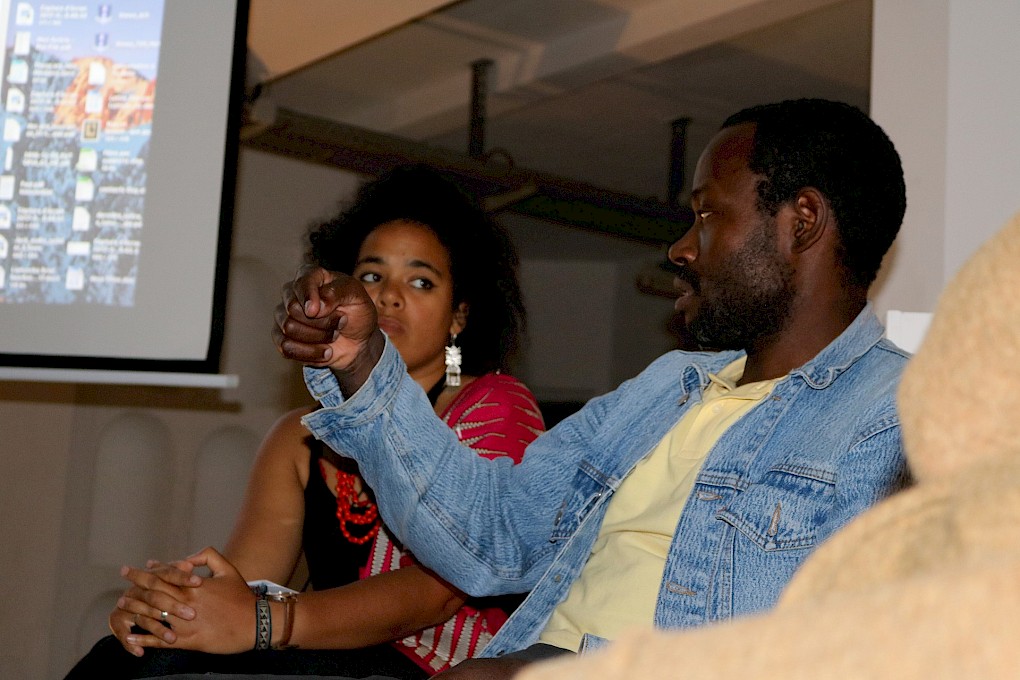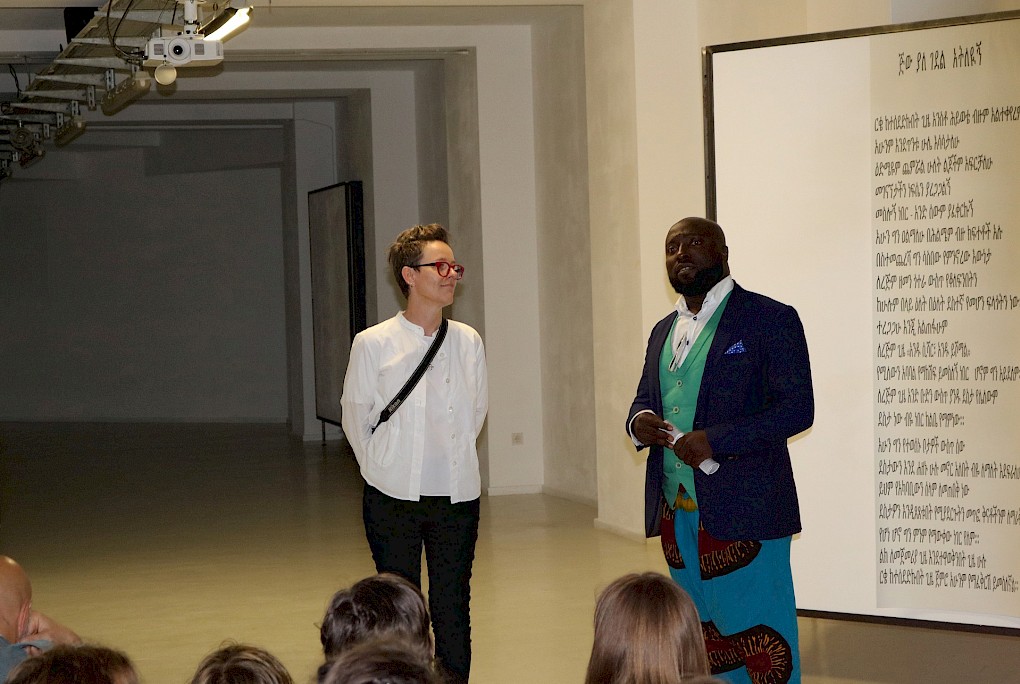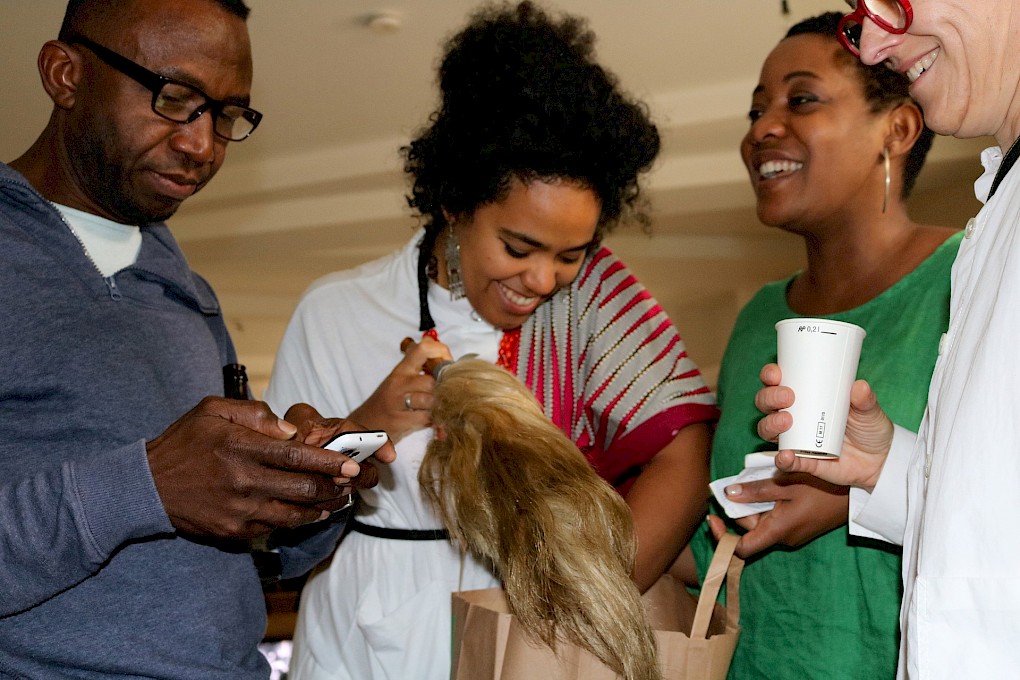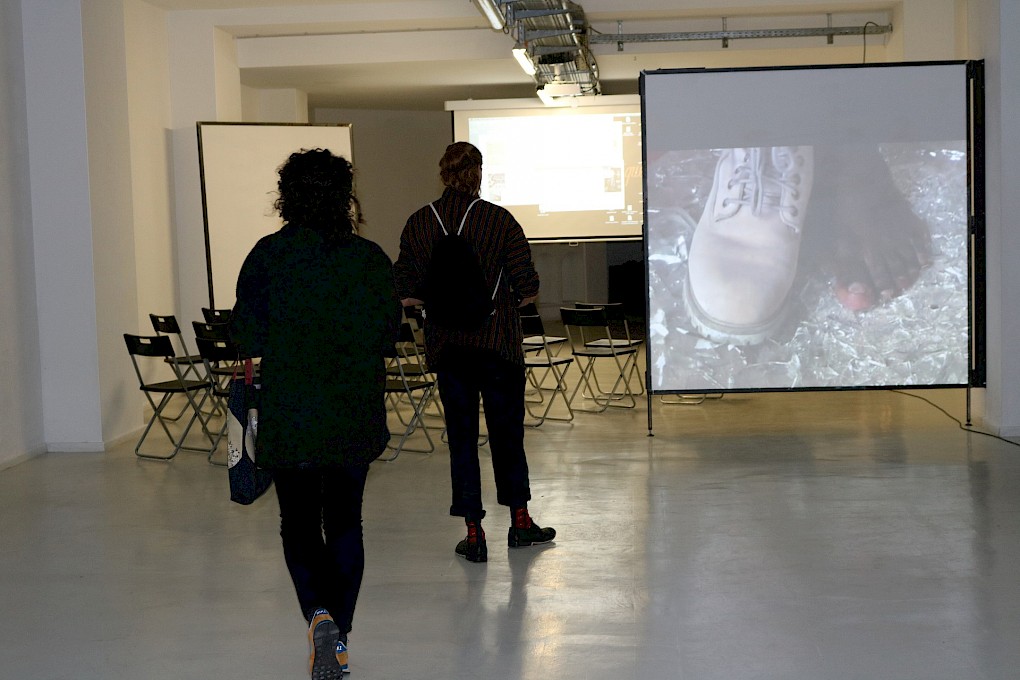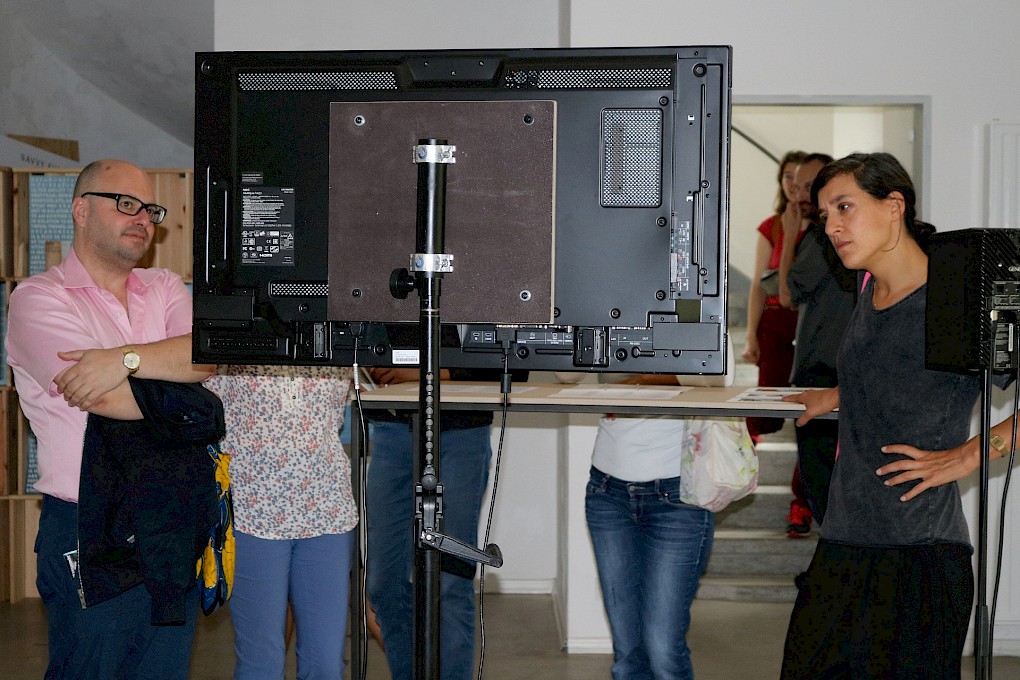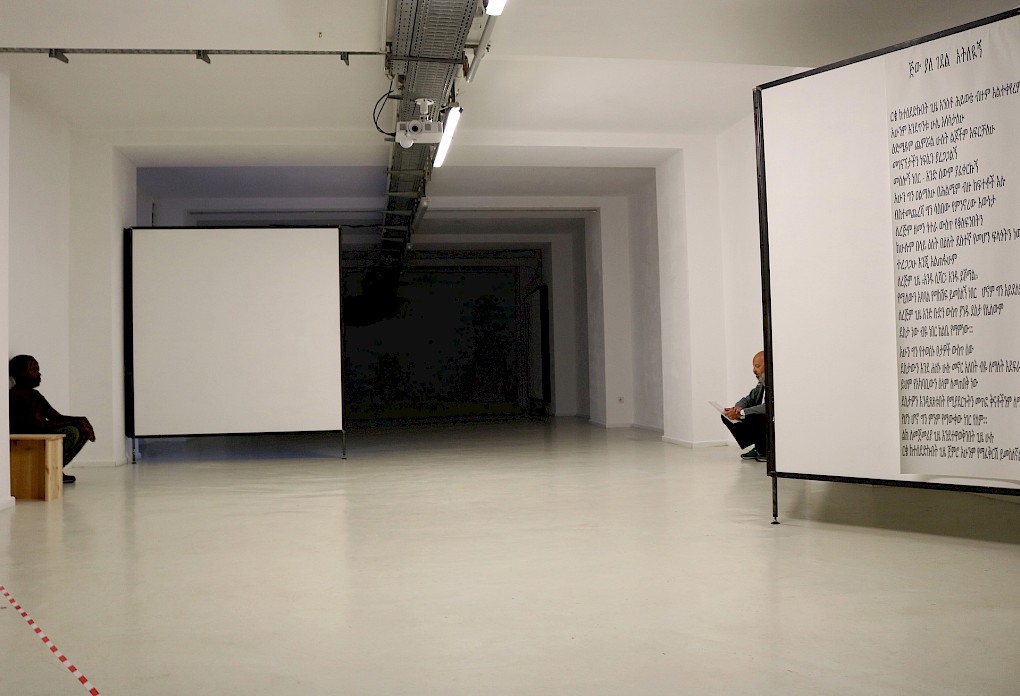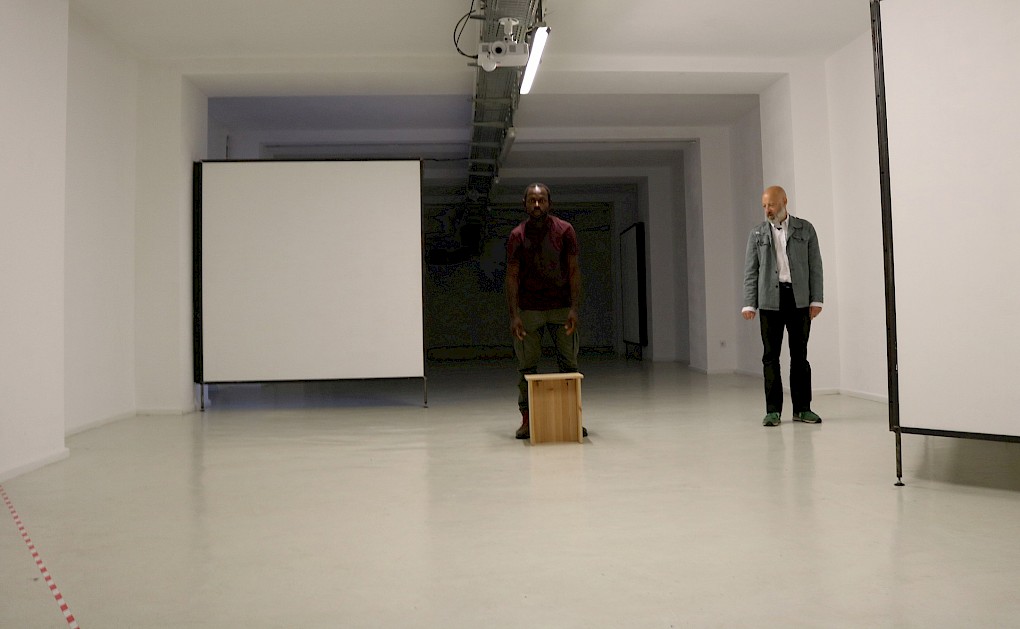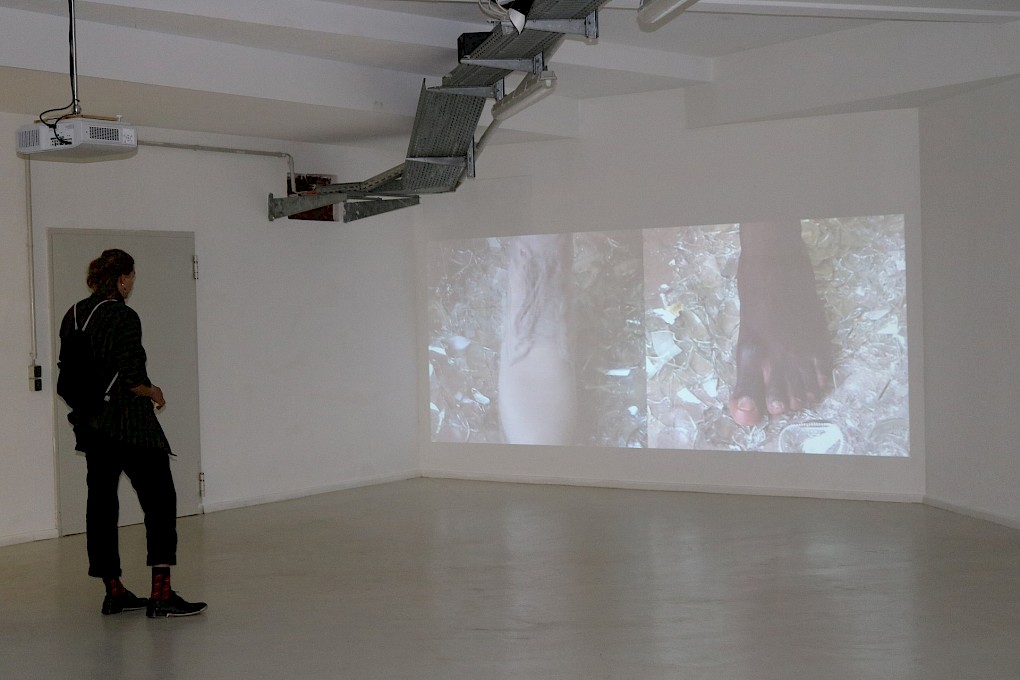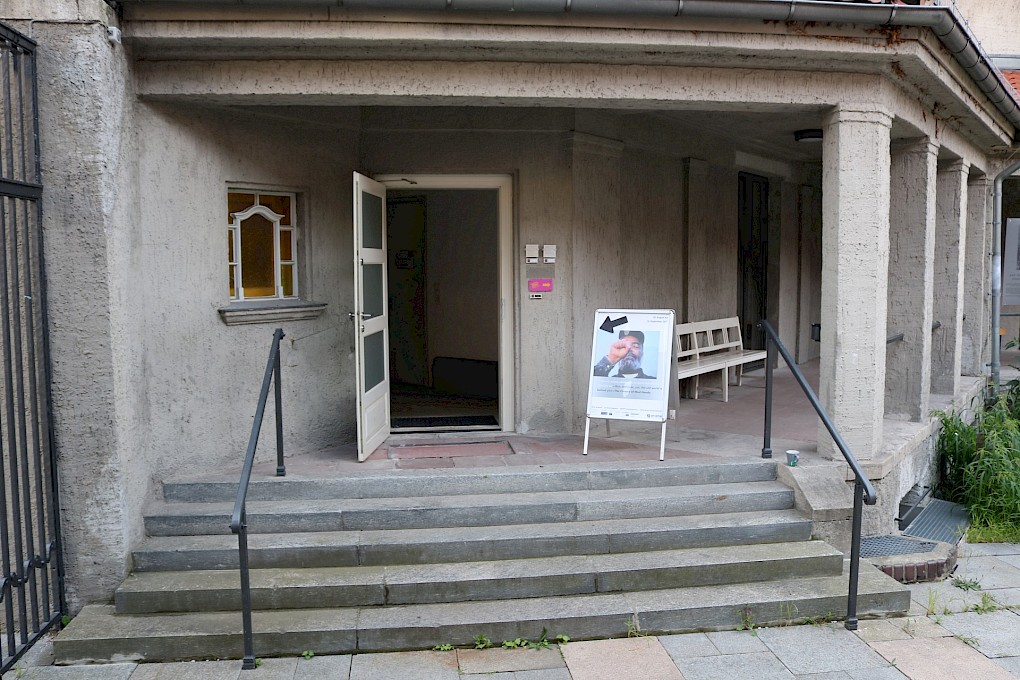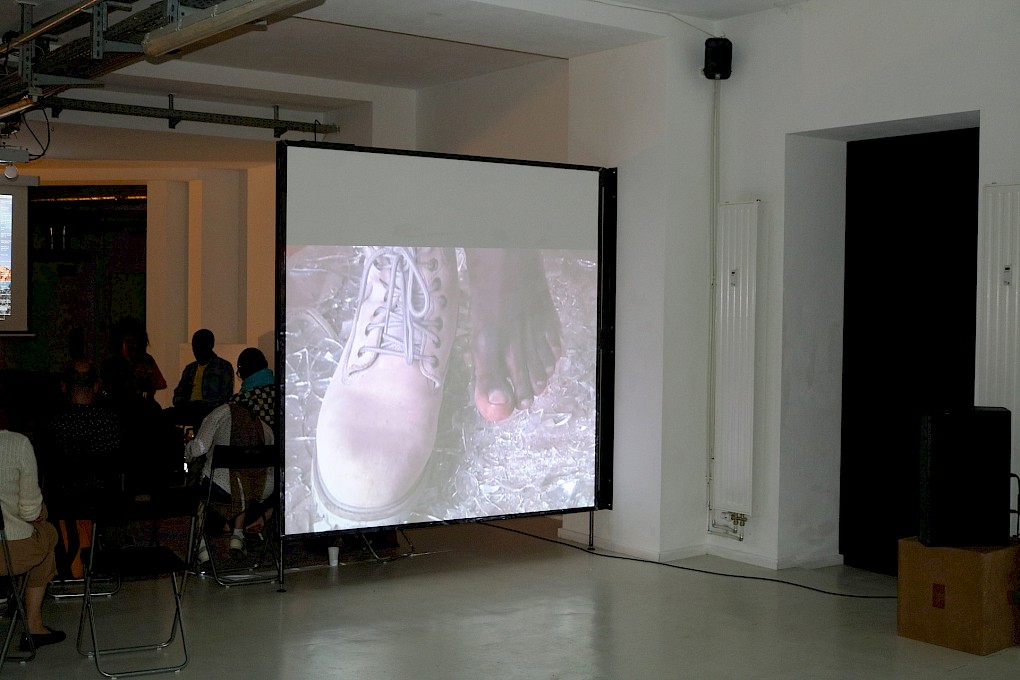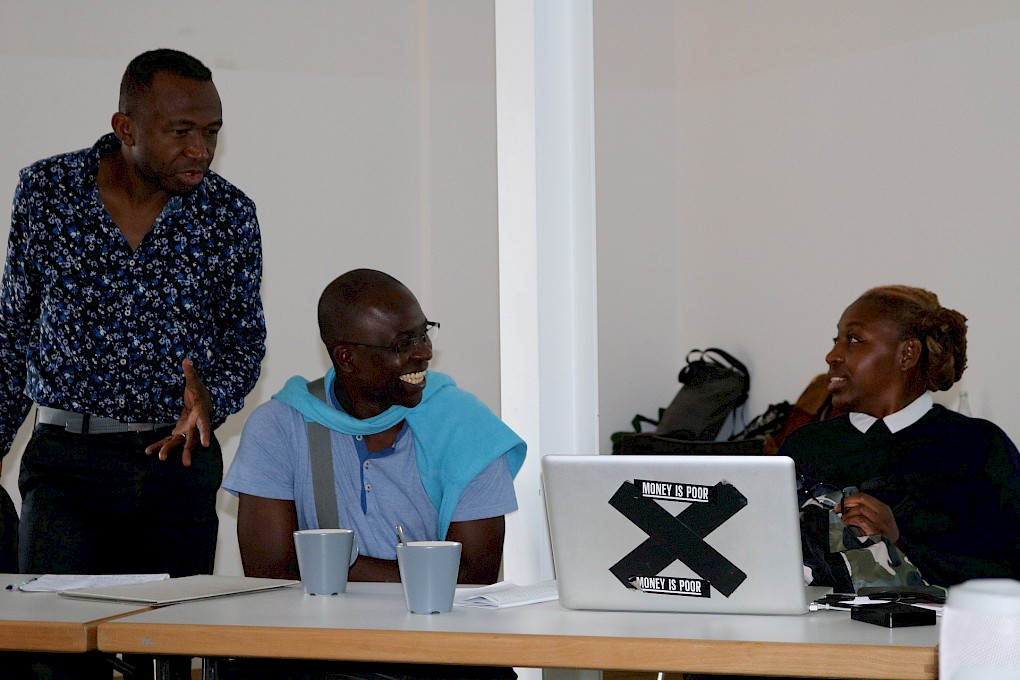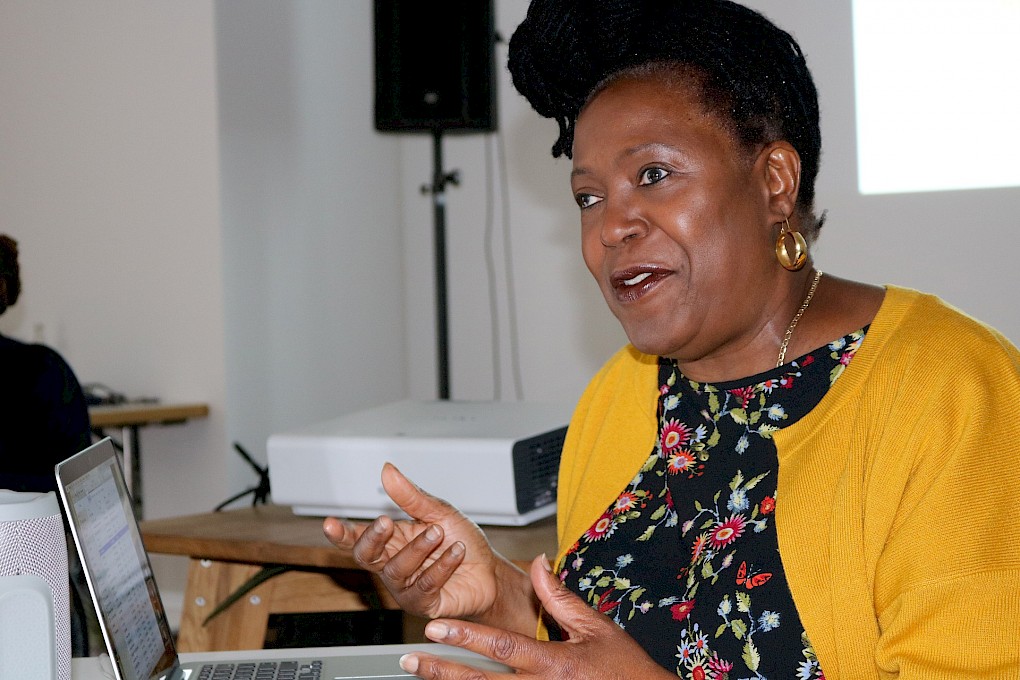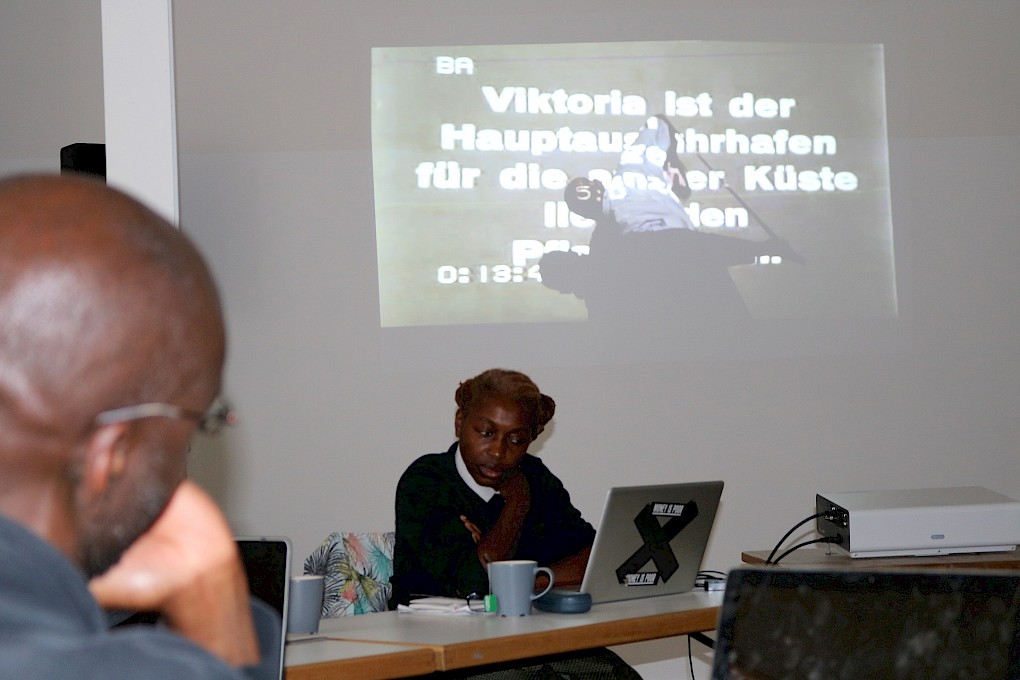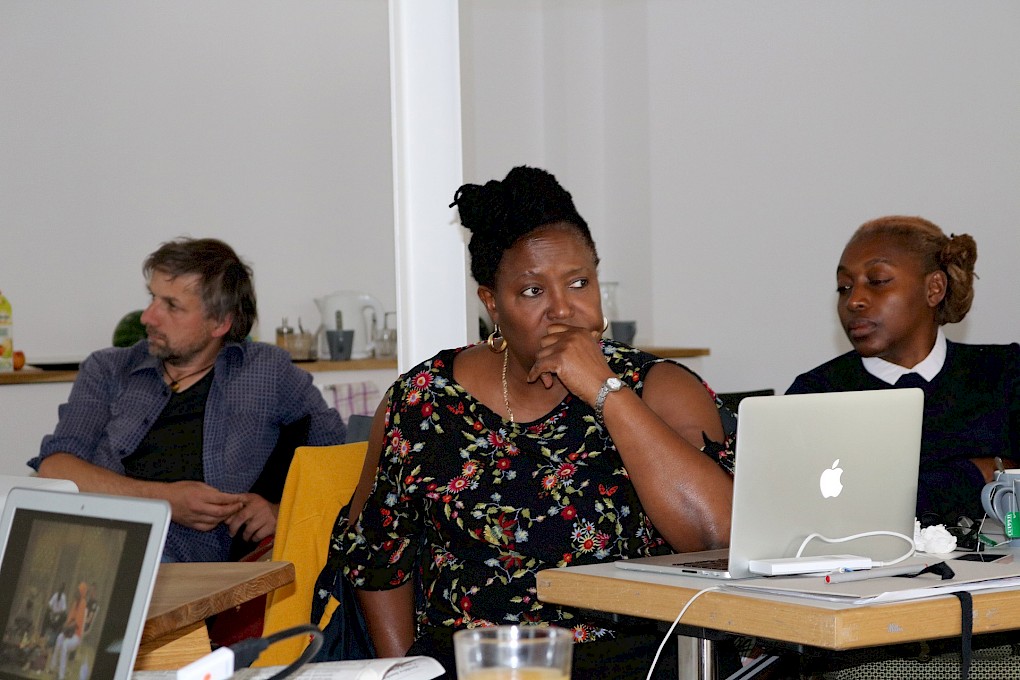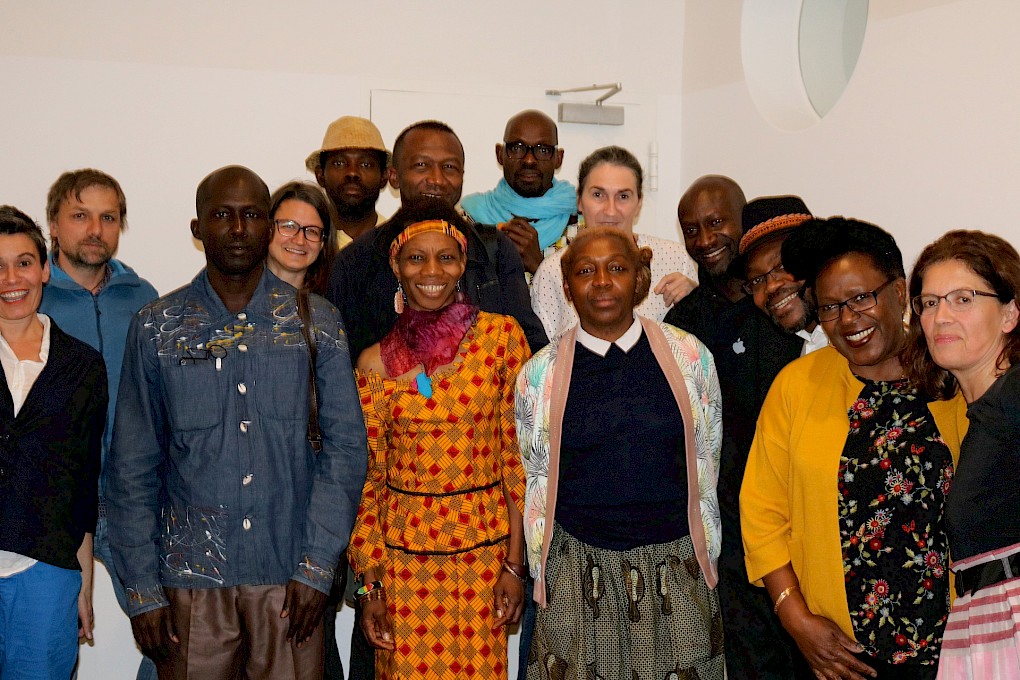Cours, cours, camarade, le vieux monde est derrière toi: The Cinema of Med Hondo
exhibition 26.08.–03.09.2017 Tue–Sun 14:00–19:00
Opening 26.08.2017 14:00
with Performance by Guy Woueté
ARTIST TALK 02.09.2017 19:00
with Guy Woueté, Nathalie Mba Bikoro
Curators Enoka Ayemba, Marie-Hélène Gutberlet, Brigitta Kuster
collaborators Arsenal – Institute for Film and Video Art, Archive Kabinett, silent green Kulturquartier, SAVVY Contemporary
“Run comrade, the old world is behind you,” is one of the slogans hoisted by the French 1968 movement, which eventually found its way into Soleil Ô (1969), Med Hondo’s best-known film. Filmmaker, actor, and voice-actor, Med Hondo was born in Mauritania, subsequently emigrated to France where has been living in the Parisian suburbs for more than fifty years.
A truly self-made man, Med Hondo began to work in theatre, uncompromisingly making his way toward filmmaking. As a director, he has produced films that unveil the political topicality of the African continent’s history and of its diaspora, and to this end has come up with charged imagery that scuttles all codification. At the same time he set out to shift cinema as a representative apparatus and to develop alternative models to European and American production and distribution structures. Med Hondo’s films constitute escape routes from the ignorance of everyday racism, constraints, and prejudices; they open up a space for us, for anger, for powerful images, for pluriversal historiography, for stylistic autonomy, for differing physicalities, colours, and degrees of tension.
His work forms the epicentre of a wide-ranging, research-based and discussion-intensive film and exhibition programme. Curated by Enoka Ayemba, Marie-Hélène Gutberlet, and Brigitta Kuster, the program aims to raise awareness about Med Hondo’s extraordinary body of work, to stimulate its appreciation, and thus contribute to making it accessible for future generations as well.
Med Hondo’s short film Mes Voisins (Our Neighbours, 1971) is the starting point for a multi-faceted exhibition with moving pictures and sound productions from Theo Eshetu, Sebastian Bodirsky and Guy Woueté. In strikingly contrasting forms and approaches, these artists question perspectives of self-determined media representation of the African continent and the African diaspora; they examine the impact and physicality of images, the history, and cultural codes attached to them.
Mes Voisins is a miniature of Med Hondo’s cinematic vision. Med Hondo interviews his migrant neighbours in Paris, migrants who live in hostels under catastrophic conditions and work in factories during the French post-war boom. He allows them share their view of the situation, to which he adds an edge by abruptly inserting drawings and political satire. Med Hondo speaks out from beyond the frame; we listen and see with him what he had witnessed more than forty years ago, forcing us to ask ourselves how we will now deal with these radical images. Med Hondo, his imagery, and the cast of his films, all insist upon a cinema that is aware of its reality-creating possibilities, and moreover that reflects about its working methods and power structures.
Every single one of Med Hondo’s films specifically frames the question, what does cinema mean from an African perspective. In “What is Cinema for Us?” published in Framework in 1979, Med Hondo reworks this incisive question, which reverberates in the exhibition’s video installations. Addressing structures and practices in which representations, cultural codes, art, history, and culture can be produced and questioned, the installations pick up on the reflective nature of cinema, rendering it inventive in a space outside cinema logic, thus interpreting affinities and frictions between languages, sound and image, between film and art.
In his internationally shown work, Guy Woueté brings together painting, sculpture, photography and video installation. Woueté sees art as a means of expressing social criticism. Many of his works revolve around everyday life in migration, questioning borders and the act of border demarcation. In response to the major ship disaster in Lampedusa in 2013, he undertook a foot march in memory of the more than 300 unnamed victims who lost their lives attempting to cross this border.
Sebastian Bodirsky studied experimental design at Berlin's Universität der Künste and works as a video editor in the documentary and artistic field as well as a facilitator in various activist contexts. In 2012, together with Madeleine Bernstorff and in collaboration with Brigitta Kuster, he organized the exhibition René Vautier militant cinema, internationalism, anti-colonial struggles. In 2017, he was involved in the production of 23 spots in support of the Tribunal NSU-Komplex auflösen. (Tribunal set up to disband the NSU Complex.)
The film and exhibition programme on Med Hondo’s work is expanded in the venues Kino Arsenal, Archive Kabinett and SAVVY Contemporary with a series of specifically inserted commentaries, referred to as “footnotes”. Like footnotes to a text, the video annotations taken from found footage and the text material highlight specific points and themes in the programme, referring to an aspect that either goes beyond the scope of the main part of the programme or leads in a different direction. Footnotes follow a strict logic, containing sources and evidence. They also provide space within a greater whole – in this case the cinema, exhibition space or library – for detours and special features, using an appealing small form to accomplish this dual focus. As curatorial commentaries, they also provide a common thread that links the exhibition venues and the different programme points with one another.
More For the other aspects and footnotes of the project, please visit Arsenal – Institute for Film and Video Art,Archive Kabinett, andsilent green Kulturquartier.
Funding The project is being supported by the TURN fund of the Federal Cultural Foundation
Thank You Zentrum Moderner Orient, Berlin, Goethe-Institut Yaoundé, Archive Kabinett, Arsenal – Institute for Film and Video Art, and silent green Kulturquartier
